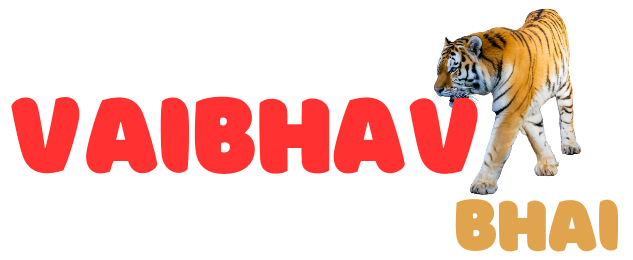Written by [ vaibhav bhai ]

The Role of Visuals in Your Blog Content Strategy A Path to Successful Blogging
The Role of Visuals in Your Blog Content Strategy A Path to Successful Blogging In the ever-evolving landscape of online content, blogging continues to hold its ground as a powerful tool for sharing information, expressing creativity, and engaging with audiences.
While the quality of written content remains paramount, the integration of visuals within a blog content strategy has emerged as a crucial element in capturing and retaining readers’ attention.
In this digital age, where attention spans are shrinking and competition for eyeballs is fierce, understanding the significance of visuals is imperative for achieving successful blogging outcomes.
• Captivating Attention
In a world saturated with information, the first challenge a blogger faces is grabbing a reader’s attention. This is where visuals step in as the unsung heroes.
Human brains are wired to process visuals faster than text. Incorporating eye-catching images, infographics, or even videos at the beginning of a blog post can provide an immediate hook, compelling readers to delve deeper into the content.
A striking visual can convey the essence of your blog’s message within seconds, making a strong first impression that encourages users to stay and explore.
Read more
Monetization Made Simple Tips for Earning from Your Blog
• Enhancing Comprehension
Complex concepts can often be challenging to explain through text alone. Visual aids such as diagrams, charts, and infographics serve as powerful tools for simplifying intricate ideas.
These visuals allow readers to grasp the main points of your content more easily, leading to a deeper understanding of the subject matter.
By presenting information in a visual format, you’re catering to various learning styles and making your content accessible to a wider audience.
• Elevating Engagement
One of the ultimate goals of blogging is to foster engagement and interaction with your readers. Visual content enhances the likelihood of achieving this goal.
A well-placed image can evoke emotions that resonate with readers, creating a more personal connection between them and your content. Additionally, visuals can break up long blocks of text, making the reading experience less daunting and more enjoyable.
Encouraging readers to share visually-rich posts can also amplify your reach across social media platforms, driving more traffic to your blog.
• Boosting Retention
Retention of information largely depends on how effectively it is presented. Studies have shown that people tend to remember only a fraction of what they read, but they retain a significantly higher percentage of information when it’s presented visually.
Incorporating relevant visuals throughout your blog posts can significantly improve the chances of your audience remembering the key takeaways. This not only adds value to your content but also reinforces your credibility as a knowledgeable source.
• Search Engine Visibility
Beyond the reader’s experience, visuals play a role in search engine optimization (SEO) as well. Search engines consider various factors when ranking content, and engagement metrics are among them.
A blog post with engaging visuals is more likely to keep readers on the page for a longer time, which can positively impact its SEO ranking.
Furthermore, optimizing your images with descriptive alt text and relevant keywords can help search engines understand the context of your visuals, improving your chances of appearing in image search results.
• Guidelines for Effective Visual Integration
While visuals can undoubtedly enhance your blog content strategy, they should be used thoughtfully and strategically. Here are some guidelines to consider:
Relevance: Ensure that your visuals directly relate to the content of your blog post. Irrelevant visuals can confuse readers and dilute your message.
Quality: Use high-quality images and well-designed graphics. Blurry or pixelated visuals can detract from the professionalism of your blog.
Balance: Maintain a balance between text and visuals. Too many visuals can overwhelm readers, while too much text can be intimidating.
Accessibility: Make your visual content accessible by including descriptive alt text for images. This is not only good for SEO but also ensures that visually impaired users can understand your content.
Consistency: Establish a consistent visual style that aligns with your brand and blog’s tone. Consistency helps build recognizability and trust among your audience.
• In conclusion
visual content is an essential component of a successful blog content strategy. Incorporating captivating visuals not only captures readers’ attention but also enhances comprehension, engagement, retention, and search engine visibility.
By following the guidelines for effective visual integration, bloggers can create a more engaging and impactful online presence that resonates with their target audience.
As the digital landscape continues to evolve, embracing the power of visuals can undoubtedly be a game-changer in the world of blogging.
read more down
• Fostering Storytelling through Visuals
While written content forms the backbone of a blog, visuals have the unique ability to enhance storytelling. A well-chosen image can set the mood, convey emotions, and transport readers into the world you’re describing.
For instance, travel blogs come to life with vibrant images of exotic destinations, allowing readers to virtually experience the journey alongside the writer.
Even in niches like personal development or business advice, incorporating relevant visuals can help illustrate anecdotes, making your narratives more relatable and impactful.
• Diversifying Content Formats
Incorporating visuals into your blog content strategy doesn’t solely revolve around static images. The digital realm offers a diverse range of visual formats that can elevate your blog’s appeal.
Infographics, for example, are excellent tools for presenting data-driven insights in a visually pleasing and digestible manner.
Videos, on the other hand, offer a dynamic way to engage audiences, especially when demonstrating how-tos, tutorials, or showcasing products.
The inclusion of such varied formats not only keeps your content fresh but also caters to the preferences of different types of readers.
• Showcasing Your Brand Identity
Visuals play a pivotal role in establishing and reinforcing your brand identity. From your blog’s logo and color scheme to the images you select, each element contributes to shaping your brand’s perception.
Consistency in visual elements across your blog and social media channels creates a cohesive online presence, making it easier for readers to recognize and remember your brand.
A carefully curated selection of visuals that align with your brand’s values and messaging can help build trust and loyalty among your audience.
• Tapping into Social Media Engagement
In today’s interconnected world, blog content doesn’t exist in isolation. The integration of visuals becomes even more crucial when you consider sharing your blog posts on social media platforms.
Social media thrives on visually appealing content, and by designing your blog visuals with this in mind, you can maximize your posts’ potential for engagement and virality.
Eye-catching visuals are more likely to be shared, commented on, and liked, leading to increased exposure for your blog.
• The Challenges of Visual Content
While the benefits of incorporating visuals into your blog content strategy are abundant, there are challenges to consider. One of the primary concerns is the potential for slow page loading times, which can negatively impact user experience.
To mitigate this, optimize your images for the web by compressing them without sacrificing quality. Additionally, ensure that your chosen visuals are appropriately licensed to avoid copyright infringement issues.
• Adapting to Technological Advances
As technology continues to evolve, so do the possibilities for integrating visuals into your blog. Augmented reality (AR) and virtual reality (VR) are emerging trends that could potentially transform the way readers interact with your content.
Imagine a travel blog that allows readers to virtually explore destinations using VR or a fashion blog that enables readers to try on virtual outfits using AR.
While these technologies are still in their infancy, keeping an eye on such trends can give you a competitive edge in the long run.
• In conclusion
the role of visuals in your blog content strategy cannot be understated. From capturing attention and enhancing engagement to fostering storytelling and building brand identity, visuals have a multifaceted impact on the success of your blog.
By skillfully integrating high-quality and relevant visuals into your content, you can create a more immersive and memorable experience for your readers, ultimately propelling your blog towards success in the ever-evolving digital landscape.
Thankyou for reading I hope you interested my content { Vaibhav bhai }
- Ranveer Singh and Deepika Padukone’s Unfortunate Encounter 2024 Famous
- Aisa Pulao Jo Kabhi Apne Khaya Nahi Hoga Best 2024
- Delightful Tri-Flavor Feast: 3 sweet and savoury tricolour dishes to Savor”
- Cooking Made Simple: Easy Lauki Ki Sabzi Recipe Unveiled 2024
- Best Nutty Delight: Mastering the Art of Chocolate Chip Cookies with Nuts 2024


1 thought on “The Role of Visuals in Your Blog Content Strategy A Path to Successful Blogging”